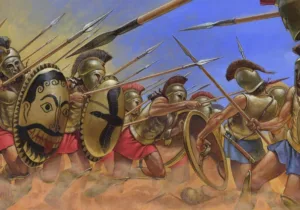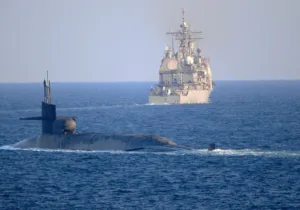At Guadalcanal, the Empire of Japan lost two-thirds of their 31,000-plus army troops committed to the fight. Approximately 1,600 Americans were killed.
Sometime shortly after midnight, August 21, 1942, 200 men of the Ichiki Butiai—or Ichiki Detachment—the 2nd battalion of the Japanese 17th Army, silently approached the east bank of the Tenaru River. Cloaked in darkness, Col. Ichiki’s shock troops left the cover of coconut groves and crossed the narrow sandspit separating the river from the sea to hit the line of American 1st Division Marines. They did not know that the Americans were waiting for them. The Battle of the Tenaru River, the first major land engagement in the first major offensive by the allies against the Empire of Japan was about to ignite.
And yet that’s not entirely true. Surely, the identity of few other bodies of water have ever been so bungled. It is known as the Tenaru River due only to a U.S. intelligence mapping error. The Tenaru is actually further to the east. But from this error the battle would take its name, and has popularly stuck. The fight actually took place at the Ilu River, which for reasons both gruesome and practical—it was hardly a river—the Marines instead dubbed Alligator Creek. This, alas, is a double misnomer. First, it was crocodiles that would later feed on the unrecovered remains of Japanese dead. Second, while the Ilu wasn’t a river, neither was it a creek. It was a tidal lagoon separated from the sea by a sandbar of varying size, depending on the tide.
Whatever it was, little poetry was wasted on it. Machine gunner Robert Leckie, in his book “A Helmet for My Pillow,” describes the stagnant body as “crested with scum and fungus; evil…and green. If there are river gods, the Tenaru was inhabited by a baleful spirit.” Nevertheless, it was there that American forces dug in.
To continue, click here to read at The Federalist.
—
Marc LiVecche (PhD, University of Chicago) is managing editor of Providence.







 Sponsor a student for Christianity & National Security 2024
Sponsor a student for Christianity & National Security 2024